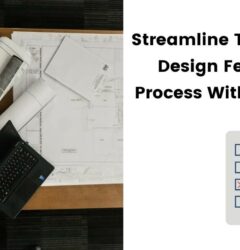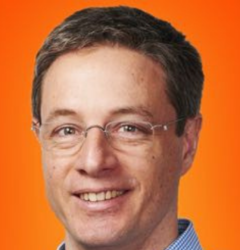The Design Life Of A Product Designer — Interview with Ben Peck
08 Sep

Ben Peck is a Senior product designer at Needle, an Advocate Marketing Cloud. With years of experience, Ben has worked with different teams on the design and development of projects ranging from design studios to marketing and eCommerce firms. He took up a lot of interesting projects, meetups, conferences which fetched him many awards too.
After interviewing some product designers, we decided to continue to get a deeper understanding of who really is a product designer? With this, we went ahead in conversation with Ben focussing on keynotes like his design experience, his work life at Needle, rapid prototyping, UI/UX, and much more.
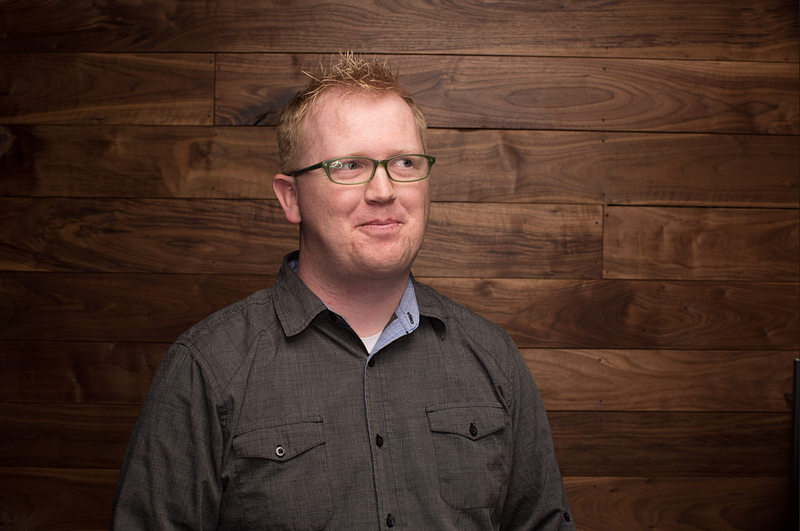
How did you start your journey as a product designer?
Ben: “I like to think my journey seemed like a natural one when it comes to becoming a product designer. I graduated with a degree in Visual Arts with an emphasis in Graphic design and started my first job getting hired for my visual design skills but was required to learn how to code what I designed. The first 5 years of my career were in agency life, working for a few design studios including a year of going at it on my own designing and developing, marketing-based websites of a variety of small to large companies.
Working in the agency life taught me how to present my work, manage multiple deadlines, accept client feedback, and decide which criticism was useful and which wasn’t.
I learned how to sell design services and got an insight into what companies valued compared to what I valued as a designer and learned to find a balance between the two. It also taught me to manage my own time, grow individually, and push myself to be a better designer. I quickly realized that solving hard business problems was just as important as making a business look attractive online.
For the last 7 years, I’ve worked in-house for 3 different software companies embedded in the Product teams that create the vision for the product. I would say that I didn’t really do “Product Design” until I worked for Experticity. Working in-house within a company allows you to have the time to go through the process, that’s necessary to understand the problems that you’re solving for their users. When I first started at Experticity I did both design and development but as the company grew from 45 employees to 200 we realized there was a need for a product organization and I made the move from being a hybrid designer/developer to solely focus on the design of the product as a product designer.
Letting go of code gave me the affordance to do things that I’d never had time for, which were wireframing large portions of the application to explore more broad evolutions of where the product could go.
Allowing us to look farther into the future 2–5 years and strategize ways we could get there and whether it was the right direction for the company. One of the other exciting things for me, making the move to just focusing on product design was, it allowed time for usability testing. It was wonderful to see actual users of our application try out what I’d designed; I got to see if they used the product the way, I expected them to and learn what was actually working as designed and what wasn’t. This was an opportunity for me to get deep into the weeds of user goals/needs, and how to find a balance between business profits and user experience.
I would say as a Product Designer right now I work on taking the vision of the company and strategizing what to build, to accomplish it. I work with a cross-functional team (Product, Design, Dev) through a process of quickly iterating through possible solutions, validating them with users, and making sure they reach business objectives.”
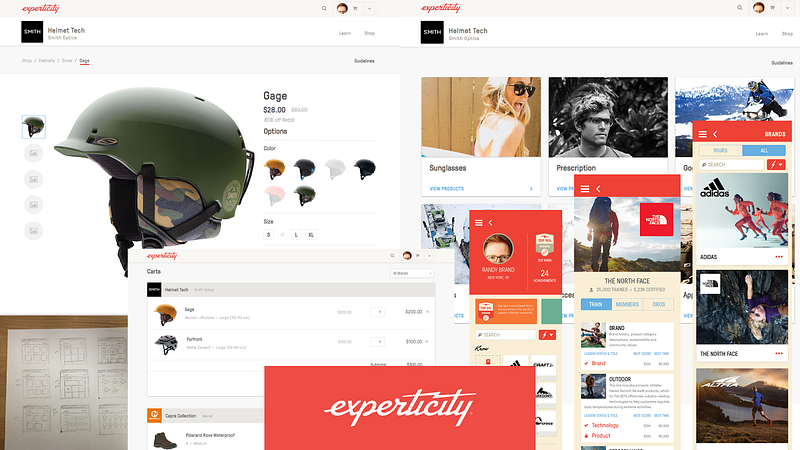
Can you introduce and tell us more about the Product Design Association at Utah?
Ben: “The Product Design Association is a group, I joined back in 2012 when it was just a small chapter of the IxDA. It was being run by Andrew Branch, who was the Director of UX for Rain, and Wade Shearer, who was the Director of UX for Vivint at the time. They had topical discussion events intermingled with local industry speaker events. The first event I attended was the first year that they partnered up with the AIGA for Salt Lake Design Week. At the time I was looking for a group that had events more focused on web application design. It seemed at the time, at least in Salt Lake City that AIGA and the Ad Federation chapters were mostly focused on events for non-digital products or more static web design. They also didn’t really have relevant content tailored to in-house design teams of complex applications. So when I ran into this IxDA group, it was very helpful to me, to network with people in a similar role as mine; as well as solving similar problems, I was trying to solve. They were talking about topics and processes that related to helping me, become better in my role at the time.
The only problem was that most of their events were an hour or more away from where I worked and lived. Once I realized this would be a good group for me I offered to help organize events in the downtown Salt Lake City area since that’s closer to where I was located. They were happy to accept help and I joined them as an organizer. We operated as an IxDA chapter for a couple of years after I joined, but we quickly realized that Product Managers were also interested in our events. Product Managers didn’t really have a group organizing events in Utah and we thought it was a good idea to include them, given that in the companies we all worked at; the UX Designers and Product Managers were tied to the hip in many cases, so why not have a group that appeals to both disciplines. To help with, creating a feeling of inclusion for Product Managers, we changed the name of the group to the Product Design Association of Utah.
I have been a co-director of the group for 4 years with Andy and Wade until just a few months ago when Andy and Wade stepped down from directing the group. I stayed on, as a director of the group and we joined forces with the Lunch UX group that was being run by Patrick Cox and brought him on as a co-director of the group. We also just added Mariah Hay as a co-director as well, who is a VP of User Experience from Pluralsight. Mariah brings experience from running similar groups such as Creative Mornings and Ladies that UX in Dallas Texas. Patrick, Mariah, and I are currently working hard to bring quality UX and Product Management events 2–3 times a month from mostly local leaders in the industry.”
What gave you the idea to start with the ‘Front: Product Design Conference?’ How successful was the first conference held in 2015?
Ben: “After years of running the Product Design Association, growing the group from hundreds to over 1,800, and having a few years of partnering with the AIGA for Salt Lake Design Week. Andy, Wade, and I decided that there was a hungry audience for a more dedicated longer event. A real conference that lived up to others that we’d attended in other cities. A conference that, not only the local audience we knew we had, but one that people would be willing to travel to could be created.
In true startup fashion we created a simple website, asked a few of our favorite speakers (locally and from out of state), found a fairly inexpensive venue and invited everyone we knew and started our first conference.
With months of late-night phone calls, messages, organizing vendors, sponsors, schwag, and signage we somehow convinced 350+ people to attend our first year. It was great! I wrote a little about the first year here. If you want to know more about the first year; you can also watch a highlight video as well.”

How did Front 2016 go compared to last year?
Ben: “A common response at this year’s conference last May was “Last year was good, this year was great!”. The first year (2015) really was a test, to see if it was something that people really wanted and if they would attend. We didn’t know if we’d get 100 people or 100’s of people out to the event. After seeing the response in 2015 of 350+ attendees we realized that this was something very valuable to people and that there were improvements that could be made and that it was very much wanted by the community. So in 2016, we upped our game, by securing a larger venue and reached higher with our goals of creating an enjoyable, memorable event that included learning, intimate conversation, and collaboration which you can clearly feel watching this video. The response has been overwhelming. In 2016, sold out with over 600+ attendees from 5 countries and 28 states across the U.S. we were amazed at the desire people have, to be inspired and learn from others’ experiences. This year we decided to record all the talks and you can find them here.”

So, what’s more, coming up in the following years of ‘Front?’
Ben: “So many exciting things to come! This May we announced our hands-on workshop event in Park City that we’ll be adding, starting next January 5–6, 2017. It’ll be a two-day, hands-on training experience to learn how to create amazing products and work like the teams you hear from, at Front Salt Lake City. It will be held in the majestic mountains of Utah for an intimate, one-of-a-kind UX and Product Management training experience. Attendees will select 4 half-day workshops, for 2 intense days of learning and practice. We’ll be working together, at 7,000 feet and atop the greatest snow on earth, in small groups of six, where you’ll be expected to collaborate and engage. To learn more about the workshop visit here.
In addition to the workshops in January, we’ll continue to have our case study talks in Salt Lake City on May 9–10. It’ll be a two-day, in-depth series of real-world, from-the-trenches case studies, by innovative user experience designers and product managers. We’re excited to share more in the months to come as we get closer. You can keep an eye on www.frontutah.com for more details.”
Being the senior product designer at the needle, how do you do rapid prototyping with your team?
Ben: “I always think it helps to have context into the business and its size when getting answers to these types of questions. At Needle, we’re at 35 employees. We have a dev team of 10 and a product team of 4 which includes our VP of Product, a Product Manager, and two UX Designers including me. Given the small team, we have to move very quickly. All of our projects are designed in Sketch and prototyped with InVision to test with users and for design approval. For very small aspects of our application, we’ll prototype a richer motion prototype with Principle. This seems to be working the best for our team right now.”
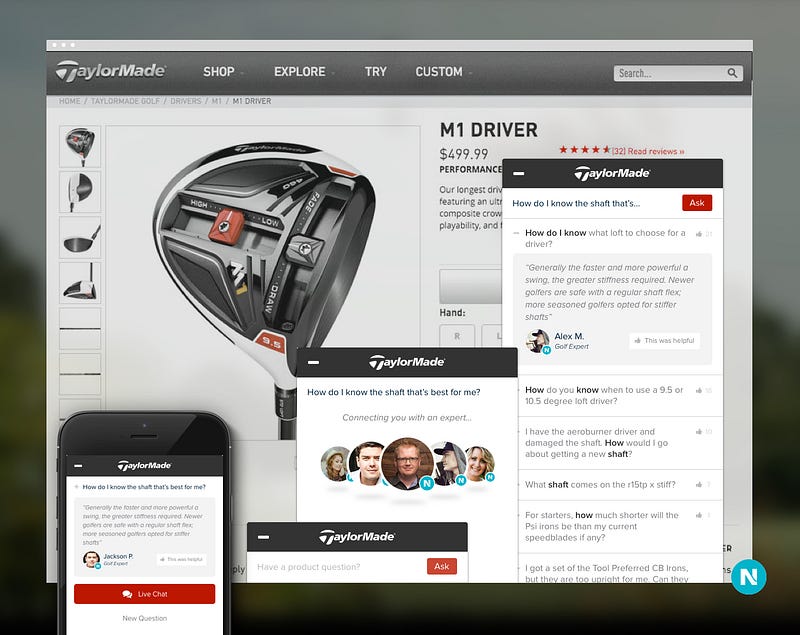
How do you collaborate with developers?
Ben: “We sit with all our developers and talk with them every day. We’re constantly working together as we design to gauge technical feasibility, timelines, capabilities and to stay up on the latest technological advancements. After designing, prototyping and testing solutions we’ll have a more official review with all the dev leads as a final sign-off before it gets into development so everyone is on the same page. We do a pretty good job not having too many group meetings to stay as productive as possible. We have as many over-the-shoulder conversations as we can unless we see that it’s necessary to bring everyone together.
We invite our developers to sit in on user testing and hear user feedback and if they can’t make it to the actual test they have access to all the videos to watch when they have the time. We also send them clips of important feedback as well so that their time isn’t too consumed by unhelpful feedback.
When designs have been tested and approved we use a tool called Zeplin to hand over the designs to the developers. It’s a simple tool to allow developers to pull all the assets and specs for the design without needing to ask us a lot of questions, need documentation, or own Sketch. Our developers have found it very useful in getting what they need with the least friction.”
According to you what’s the importance of a product designer in a company?
Ben: “I’m a bit biased here, but I feel Product Design is essential to a company’s success, progress, and longevity. Development is the vehicle to get something produced and can easily be done without the support of design but what product design provides is a vehicle to understand the most informed solution that will be helpful and useful to its intended users. The design has become the new way companies compete in this highly competitive world now, especially in tech companies. Companies used to compete on business models, then technology, and new design.
Jason Fried recently said “It’s never been easier to start something. It’s never been harder to keep it going.”
and I agree with that. Investing in product design for your product sets the company up for better chances of success. Not because it makes them look pretty but that, it ensures what is being built; is filling a need in someone’s life, and that it makes sense to them how to use it. Gone are the days, that users just deal with your products. If it’s a difficult product to use then someone will take it upon themselves to create a better one and people are more than willing to jump ship for a better experience.”

How do you differentiate the profile of a ‘product designer’, ‘UX designer’, and an ‘Interactive Designer?’
Ben: “This is a tricky one, cause the lines have been blurred here when it comes to titles. Personally, I’ve been frustrated with the number of titles that our industry throws at the wall to see if they stick. I’ve had many titles in my career, you can read most of them here. At the same time, I’d really like to have a succinct way of explaining to someone my job and what I do within a company. It’s just the world we live in.
“Interactive Designer” was a title for a designer years ago who, in my mind, was someone who did a lot of design work that involved a lot of motion. Designers working with Flash or After Effects seemed to have this title. Now that flash has died out in the web design and software design world it no longer seems relevant to someone who works in this part of the industry. “Interaction Designer” or “Interface Designer” seem to still be around and still relevant in describing what they do.
The most popular title for designers right now is “UX Designer” and there seems to be a move from UX Designer to Product Designer. I’ll also point out that the Airbnb team uses the title “Experience Designer”. The most common theme with all these titles is they’re all “Designers” so in an ideal world it would be great if we could just call ourselves Designers but the world needs and wants something more specific but, they want something that makes sense to people who don’t fully understand what we do.
From my point of view, a UX Designer and a Product Designer do the same work. Their roles are synonymous as far as I can tell. When you think about it, user’s experience can’t be designed by one person or any singular group within a company
so it doesn’t make a lot of sense to put that responsibility onto one person or group by prefixing their title with “UX”. It’s the whole company’s responsibility to create the best experience for the users. So it makes sense why the title UX Designer is getting so much scrutinization and therefore evaluating what other way we could be identified, which has resulted in people changing the title of UX Designers to Product Designers. Product Designer makes a lot more sense given that we work on user improvements to the software product and that most designers live under a product organization within the company and work for hand in hand with Product Managers.
As far as the role of a Product Designer goes I think Eric Eriksson put it quite well when he said
“A good Product Designer knows a bit of animation, prototyping, coding, research, visual and interaction design.”on What is Product Design?
A Product Designer identifies, investigates, outlines, and validates the problem. She then explores many solutions, first with low fidelity ideas that can be quickly explored and converted into highly crafted designs with fully functional prototypes producing as many iterations as necessary while validating them with users all along the way.”
Can you share some of your best work?
Ben: “Like so many other designers I find it difficult to keep my portfolio up to date. I do my best to post occasionally at dribbble. My most recent work is shown in most of these decks of mine. You can find some of my older work here.”

As a designer what social channels do you love to hang around?
Ben: “I basically use them all but I use them all for different reasons. My favorite is Twitter right now. I only use Facebook for my family really and most of my pictures I post on Instagram are of my kids. Twitter is where I interact with other designers and talk about related industry news or events. I also use LinkedIn to connect with people that are in my industry. We also have two slack groups. One for the Product Design Association and one for Front.”
More from Ben
To know more about Ben, you can visit here or read his articles on medium. To appreciate his work you can also follow him on google+ and the creative market.
zipBoard is still on its journey to interview great product designers; much more coming up next. In case you missed the previous ones you can visit our blog and enjoy reading the experiences of these amazing product designers.
Contributor’s Ruchi Goel, Erica Louise
Request Demo
Request a personalized demo of zipBoard to annotate tasks visually and collaborate seamlessly with your stakeholders remotely
Get DemoRecent Posts
- Technical Document Review Process: How to Improve the Feedback Process for Faster Project Completion October 21, 2024
- The Ultimate Website QA Checklist and Guide (Free Excel Template Included) October 7, 2024
- Transforming Project Management: The Power of AI-Powered and Custom Task Types October 1, 2024
- Meet Radman Tavakoli, zipBoard’s Full-Stack Developer Co-Op (August 2024) September 19, 2024
- Construction RFI Management: How Many is Too Many? September 17, 2024
©️ Copyright 2023 zipBoard Tech. All rights reserved.

